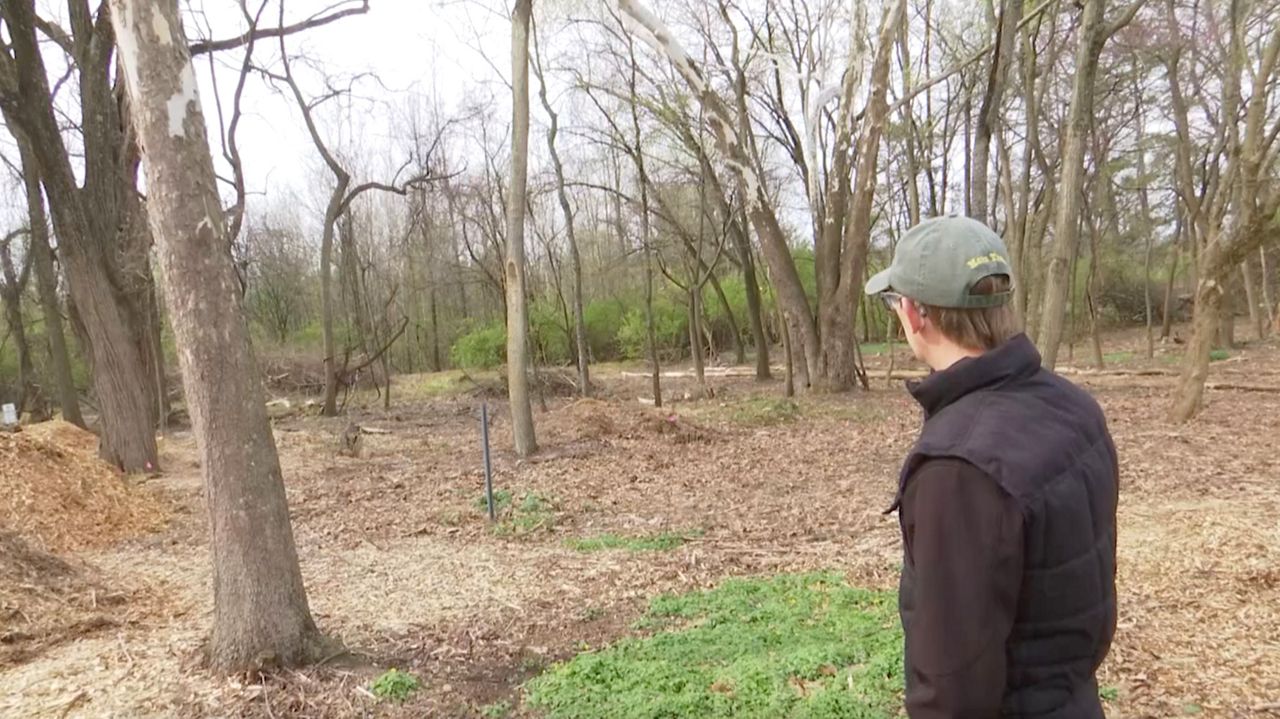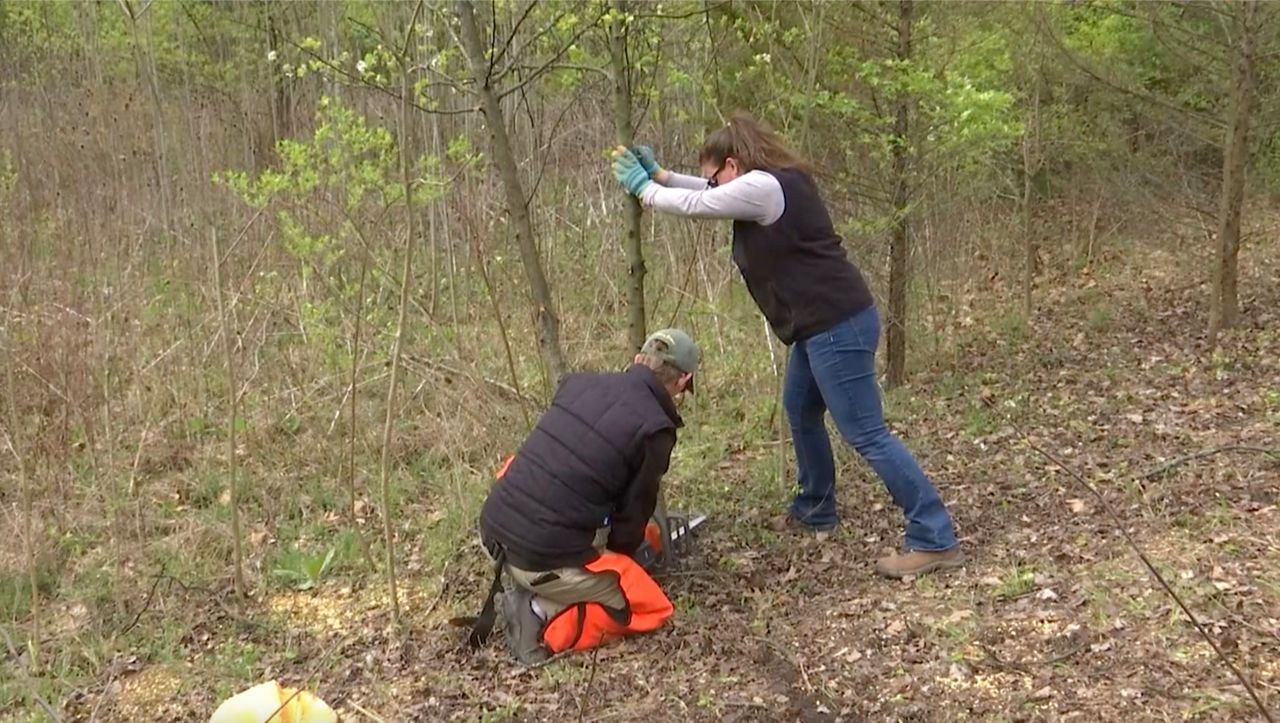MT. HEALTHY, Ohio – Nestled between a Mt. Healthy neighborhood and the busy Ronald Reagan Highway, is about 13 acres of a resource that’s become far less common in Ohio, a wetland reserve.
According to the Ohio Wetlands Association, the state has lost 90% of its original wetlands because of industry, agriculture, and other development encroaching on the habitats, which is why when Aaron Horsley realized the asset in his neighborhood, he wanted to make sure it was restored to its full potential.
A newcomer to Mt. Healthy, Horsley said he stumbled upon Forest Avenue Wetland Park by accident, disappointed to see the park almost entirely engulfed in invasive species.
“Every single bit all the way to the fence was nothing but a thick carpet of honeysuckle,” he said, pointing out the front of the park.

It only takes a matter of years for fast-growing invasives to spread and take over a space, especially if there’s no one there to fight back.
As a lifelong nature-lover, Horsley wanted to help, so he got in touch with other interested neighbors, reached out to the city of Mt. Healthy and offered his services. In the months since, the Forest Ave. Wetlands Renewal Project worked to remove acres of invasive plants, restore a trail around the park, and reclaim community areas that have been inaccessible for years `because of the overgrowth.
“It was a discovery,” he said of a picnic table along the trail. “It’s been like that for a lot of the stuff back here. It was literally completely engulfed in honeysuckle all the way around.”

Horsley’s also found grills and benches, and with help from the city of Mt. Healthy, has been able to replace or restore them for community use, in hopes that the park can get back to what it once was.
“From what I’ve heard, it was a big community hub,” he said.
Over the spring, Horsely plans to host a series of community cleanup events to tackle the rest of the invasive trees like Callery Pear and honeysuckle.
“Once we get rid of those, it will open up the sunlight to this area again and allow the things that are meant to grow here to thrive,” he said.
In the meantime, he and his fellow volunteers, like Alex Kascak, are working to plant native trees in the newly cleared areas so the habitat can slowly regrow. A biologist, Kascak said he understands what it will take to keep the park moving in the right direction, but he hopes soon the entire neighborhood can see their work pay off.
“We know that we’re going to have to continually be out here to keep the invasives down, but the natives will come back. First it’ll be plants, then animals, especially birds,” he said. “If we can get the natives back, we can make the environment more resilient.”
The project is documenting its process on its Facebook page and is requesting support and donations to help continue their efforts through its GoFundMe.



